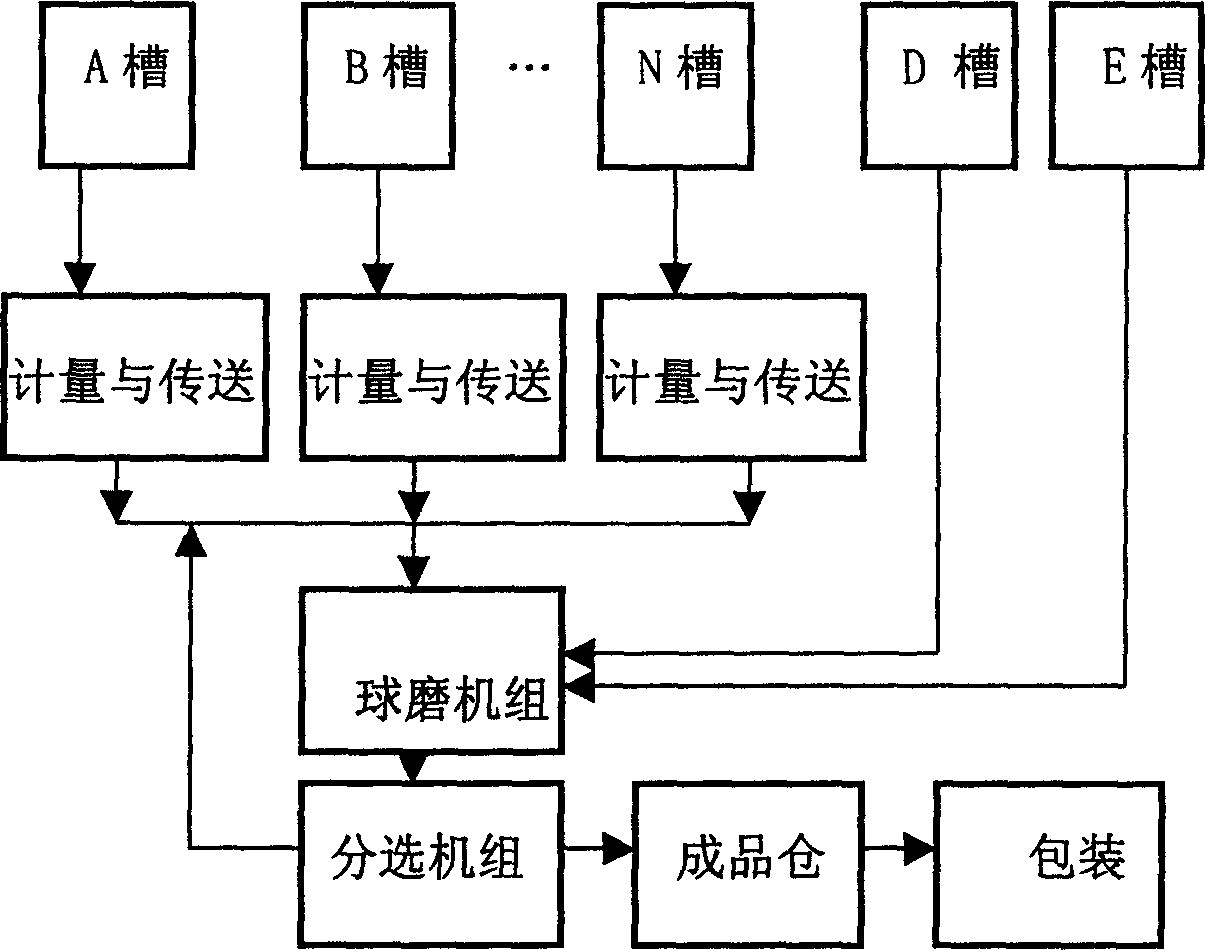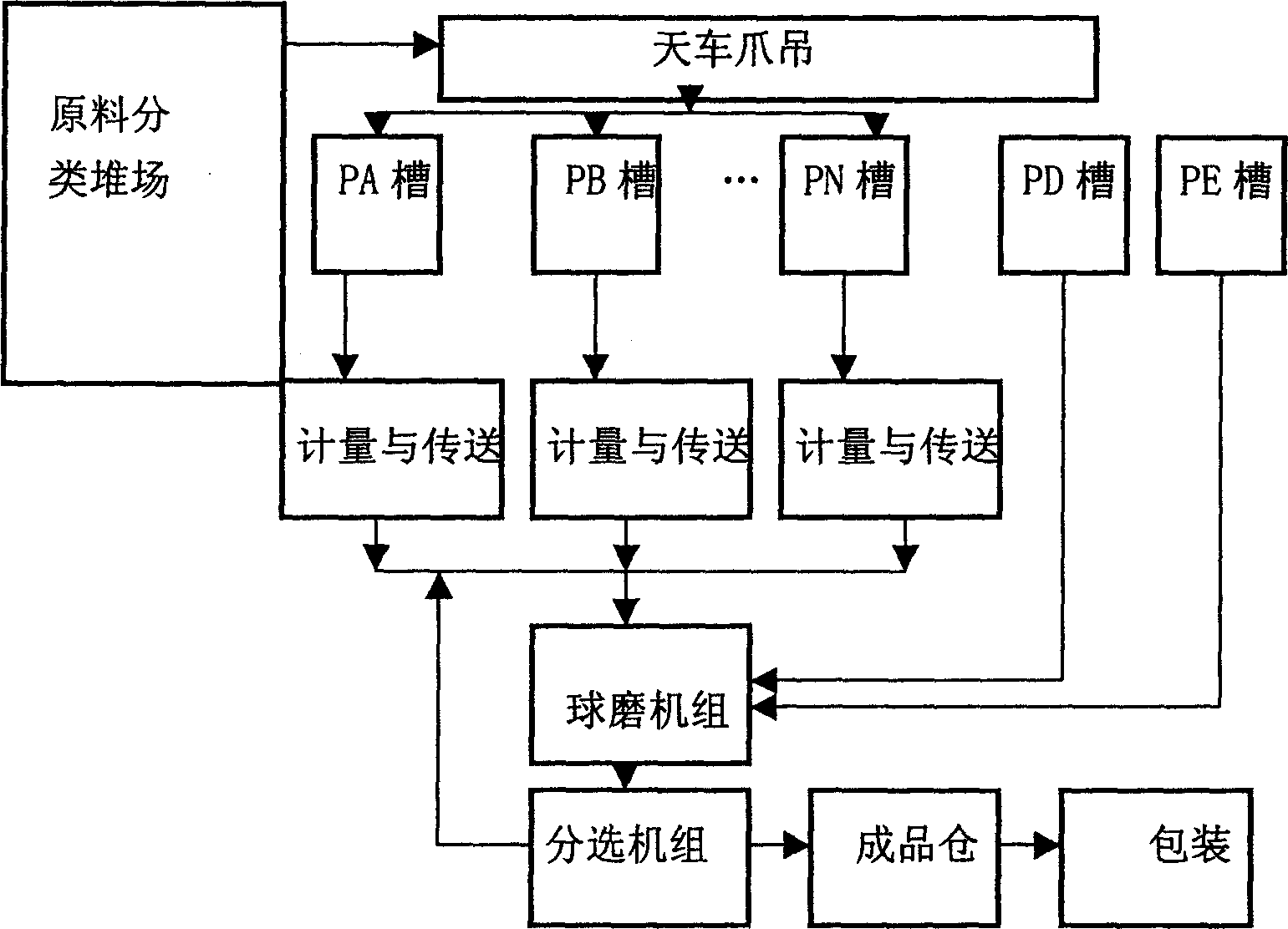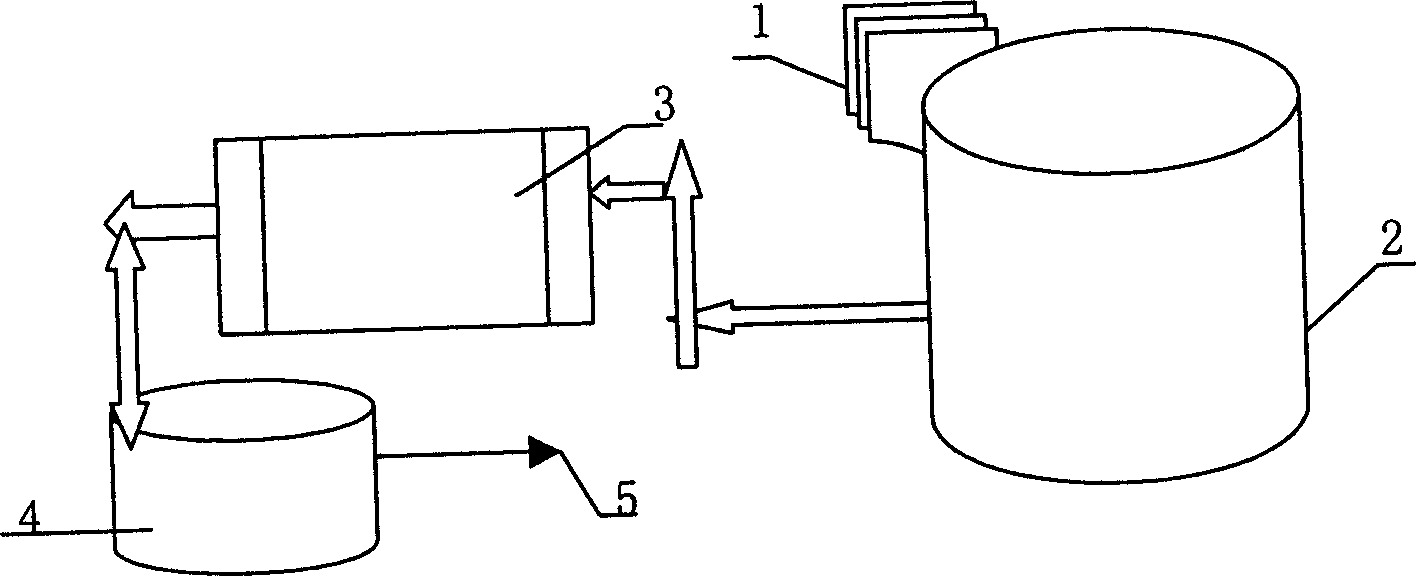New type of ecological cement and its prepn and application
A kind of ecological cement, a new type of technology, applied in the direction of cement production, etc., can solve the problems of metal poisoning, air, ground water pollution, ground water waste, etc.
- Summary
- Abstract
- Description
- Claims
- Application Information
AI Technical Summary
Problems solved by technology
Method used
Image
Examples
Embodiment 1
[0104] Embodiment 1: Novel cement and preparation method, calculate with the weight ratio of original material:
[0105] (1) Material F: fly ash 15%, water quenched slag 40%, shale (unroasted) 6.4%, material F additives: calcium sucrose 0.1%, sodium polyphosphate 0.2%, triethanolamine 0.3%, F The batching ratio of materials: molar ratio [Si] / [Ca]=1.0, [Si] / [Al]=2.25.
[0106] In-situ grinding of incoming materials is adopted, and various available materials are added to the grinding mill together with additives for grinding. The particle size is controlled at 3% of the 200 mesh sieve, and the specific surface area is 4300cm 2 / g.
[0107] (2) P material: slag 5%, lime 13%, phosphorus slag 14.3%, P material additives: sodium lignosulfonate 0.2%, active milk of lime 0.5%, sodium borate 0.2%. The batching ratio of P material: molar ratio [Si] / [Ca]=1.0, [Si] / [Al]=2.6.
[0108] The above-mentioned ingredients are processed by in-situ grinding of incoming materials, and various ...
Embodiment 2
[0117] Embodiment 2: Novel cement and preparation method, calculate with the weight ratio of original material:
[0118] (1) F material: fly ash 5%, steel slag 10%, water quenching slag 39%, shale (roasting) 7%, F material additives: sodium lignosulfonate: 0.5%, sodium polyphosphate: 0.1%, Polyvinyl acetate 0.4%. , The batching ratio of F material: molar ratio [Si] / [Ca]=0.5, [Si] / [Al]=3.0.
[0119] The shale in material F adopts pre-roasting process, the roasting temperature is 800-900°C, and the roasting time is 1-2 hours.
[0120] Grind the above ingredients separately and enter into the mixer for mixing, firstly grind and then mix.
[0121] (2) P material: slag 5%, lime 13%, phosphorus slag 13%, P material additives: sodium polyphosphate 0.1%, active Al(OH) 3 l%, active milk of lime 0.9%. Grind the above ingredients separately and enter into the mixer for mixing, firstly grind and then mix.
[0122] Ingredients ratio of P material: molar ratio [Si] / [Ca]=0.5, [Si] / [Al]=...
Embodiment 3
[0134] Embodiment 3, novel cement, calculate with the weight ratio of original material:
[0135] Material F: 25% red mud, 40% water-quenched slag, 6% fly ash
[0136] F material additives: calcium dihydrogen phosphate 3%, sodium aluminate 1%
[0137] P material: 3% slag, 18% phosphorus slag
[0138] P material additives: active lime milk 0.1%, sodium lignosulfonate 0.1%, calcium sucrose 0.4%, calcium chloride 1.4%
[0139] Particle size control of material F: 3% remaining on 200 mesh sieve, specific surface area is 4300cm 2 / g;
[0140] Particle size control of material P: 4% remaining on 200 mesh sieve, specific surface area is 4900cm 2 / g.;
[0141] Ingredients ratio of F material: molar ratio [Si] / [Ca]=1.7, [Si] / [Al]=1.5
[0142] Ingredients ratio of P material: molar ratio [Si] / [Ca]=0.3, [Si] / [Al]=4.0
[0143] Material D: 4% of directing agent, solid content of material D: 78%.
[0144] Material D is made of Al(OH) 3 , strong alkali, water glass and aluminum sulfat...
PUM
| Property | Measurement | Unit |
|---|---|---|
| Specific surface area | aaaaa | aaaaa |
| Specific surface area | aaaaa | aaaaa |
| Specific surface area | aaaaa | aaaaa |
Abstract
Description
Claims
Application Information
 Login to View More
Login to View More - R&D
- Intellectual Property
- Life Sciences
- Materials
- Tech Scout
- Unparalleled Data Quality
- Higher Quality Content
- 60% Fewer Hallucinations
Browse by: Latest US Patents, China's latest patents, Technical Efficacy Thesaurus, Application Domain, Technology Topic, Popular Technical Reports.
© 2025 PatSnap. All rights reserved.Legal|Privacy policy|Modern Slavery Act Transparency Statement|Sitemap|About US| Contact US: help@patsnap.com



